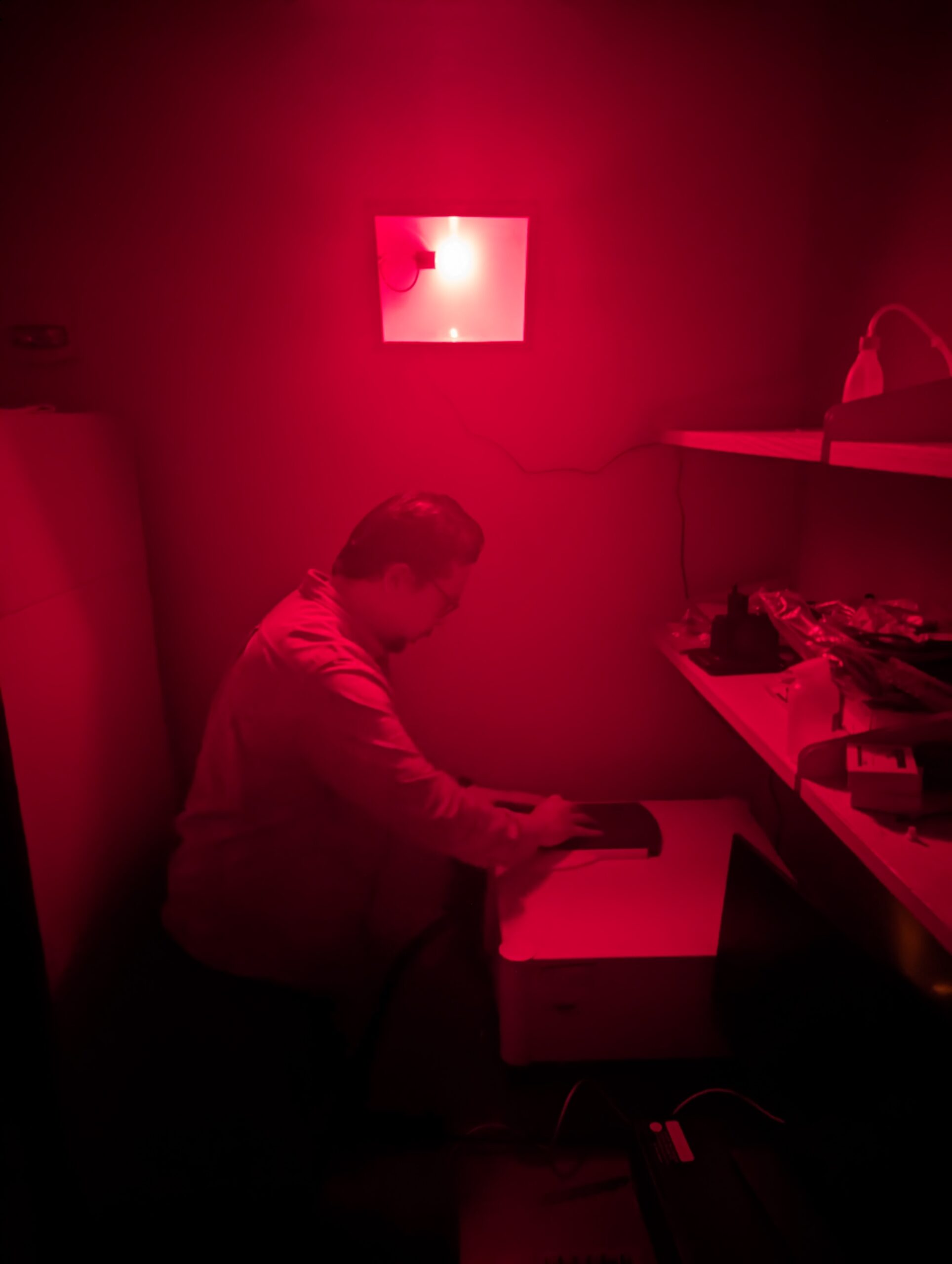Vanderbilt Researcher Illuminates the Impact of Sunlight on Eye Function
By: Andy Flick, Evolutionary Studies scientific coordinator
A recent study by assistant professor of biology and ophthalmology Gianni Castiglione illuminates our understanding of eye diseases like macular degeneration. The paper, Convergent evolution of dim light vision in owls and deep-diving whales, was published in “Current Biology.” Rhodopsin (RHO), a light-sensitive protein found in the rod cells of the retina in the eyes of vertebrates, produces a harmful by-product called all-trans retinal. Rod arrestin (Arr-1) helps eliminate it and may safeguard against toxic build-up.

Photodamage risk from all-trans retinal varies among species, depending on dim-light sensitivity and light conditions. Nocturnal rodents are more vulnerable than primates, especially when exposed to sudden, intense light changes. The researchers predicted that animals facing high photodamage risk might have evolved Arr-1 to better handle all-trans retinal.
To test this prediction, the team of researchers looked at publicly available genetic data across species of mammals and birds. They found similar evolutionary trajectories in owls and deep-diving whales, creatures adapted for low light but sometimes exposed to intense light. Both groups of species showed an accelerated evolutionary change in Arr-1, sharing a common mutation. They then used lab studies to show that this mutation increased all-trans retinal sequestration by 30%.
Importantly, these groups of animals have independently evolved for 300-million years. This time between the species and the nearest common ancestor suggests that this is a case of convergent evolution, where the same genetic changes happen in two different lineages due to similar environmental pressures.
Castiglione shared an example of convergent evolution that folks may be more familiar with, he said, “an excellent example of convergent evolution is the white coloration of arctic animals. Foxes, owls, hares, polar bears, all white because of the extreme selection pressures related to snow/ice color and how obvious a brown animal, for example, would appear against that backdrop. That would be very disadvantageous for both predators and prey, and so you see the convergent evolution of white coloration across all of these very different species.” These findings extend beyond evolutionary biology, potentially helping us understand and treat eye conditions like macular degeneration and Stargardt disease, which is a rare genetic eye disorder. They shed light on vision and adaptation in diverse species. Castiglione shared his thoughts on how we might use these findings in the development of answers to macular degeneration-related diseases in Box 1.
| Box 1. For over 10 years now, it’s been known that Arr-1/RHO protein complexes can neutralize all trans retinal (ATR) by binding and sequestering it within the protein structure, preventing it from reacting with other molecules in the photoreceptor cell. This is very similar to artificial compounds that sequester all trans retinal and thereby partially restore vision in animal models of macular degeneration. These compounds are so promising that they are in clinical trials, yet they have displayed major side effects such as causing other, albeit less severe, forms of blindness (!). Our study shows that enhanced RHO/Arr-1 neutralization of all trans retinal has evolved at least twice, in owls and whales, suggesting this is an effective strategy to mitigate ATR sequestration. Just like the white coloration in arctic animals, convergent evolution like this between two highly diverged species tells you that this is occurring for a very strong reason (such as predation in the arctic; a super strong selection pressure). This suggests that clinical strategies to treat macular degeneration should copy what evolution has already produced and pursue treatments that can modulate RHO/ARR-1 to sequester all trans retinal with higher efficiency, just like is occurring in owls and whales. For ophthalmological and biochemical reasons, we believe this represents an alternative strategy that does not have the same negative side effects on vision as those xenobiotic compound treatments in clinical trials. RHO/ARR-1 are already expressed at extremely high levels in the retina and are well tolerated physiologically. Practically speaking, this strategy also evolved naturally over millions and millions of years of trial and error—a much longer optimization period than any mouse experiment would take. We just saved everybody a lot of time by looking at what evolution already did; why re-invent the wheel! We are pursuing this now in mice, where we have recently created a knock-in mouse that has this same point mutation that we found in the Arr-1 of owls and whales. |
He added, “Using my training in Ophthalmology, we are going to see if this mutation reduces blindness when we cross these knock-in mice with macular degeneration disease model mice. If it does, then it will tell us this a very viable clinical strategy, where we can pursue further studies that target Arr-1 using compounds or even gene therapy to deliver copies of owl/whale arrestin.”

Castiglione wasn’t born with an innate love of evolutionary biochemistry, but it was something that grew as he learned more about biology and chemistry, starting in high school. He was kind enough to share, “I didn’t think much about the evolution of vision until my Ph.D., but I became quickly interested in biology near the end of high school, where I found it so engaging it helped me to focus and apply myself – until then I was pretty aimless. I remember learning about proteins and being fascinated about how this is the interface where chemistry somehow becomes biology through the invisible hand of evolution. That mystery still captivates me to this day!”
Funding Statement: The authors acknowledge funding NSERC DG and NSERC Postdoctoral Fellowships (both to co-authors).
Citation: Gianni M. Castiglione, Yan L.I. Chiu, Eduardo de A. Gutierrez, Alexander Van Nynatten, Frances E. Hauser, Matthew Preston, Nihar Bhattacharyya, Ryan K. Schott, Belinda S.W. Chang. Convergent evolution of dim light vision in owls and deep-diving whales. Current Biology. 2023.
https://doi.org/10.1016/j.cub.2023.09.015.